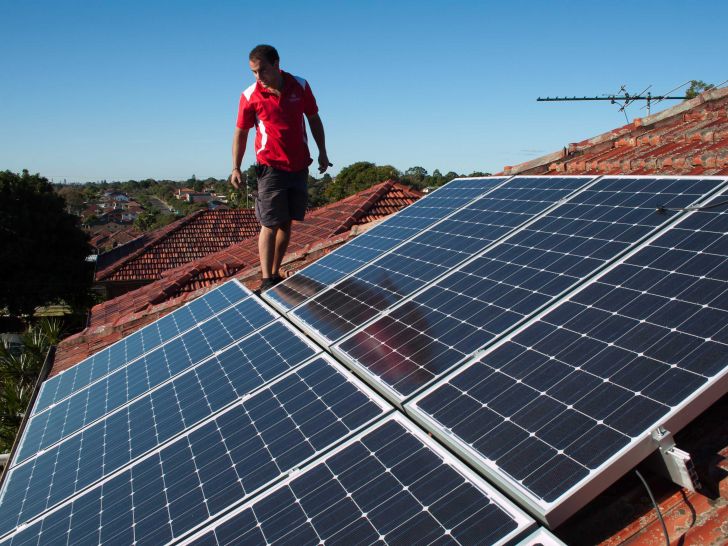Solar power is one of the things that the modern world offers as in India there is actually government subsidies for solar panels in domestic homes. This is a pretty awesome thing to know since the government even urges the people within the country to have a better life by utilizing solar power. Well, more and more countries in the world should actually try to find alternative sources of energy and power to anticipate the depletion of world’s oil as the current primary source of power and energy in various parts of the world.
This particular matter is actually a part of the National Solar Mission which was launched back then on January 11th of the year 2010 by the Prime Minister. The end result of the project is targeted to be at the year of 2022 with such ambitious target of having to deploy about 20,000 MW of solar power connection. Surprisingly one of the main things concerned by the mission itself is the reduction of solar power generation cost within the country. It is true that a large-scale deployment of solar power generator then the cost to get it done could be a bit cheaper compared to individual or smaller scale deployment of itself. Moreover, it is also stated that the point of this mission is to bring India to be a global leader in solar energy. Surely that is an ambitious target to achieve.
Understanding Everything about the Subsidies
Surely there is a specific procedure needed to get the domestic homes solar energy subsidies related to the mission mentioned earlier. One of the things to understand at first is the given subsidies itself. It was a long time ago that the amount of subsidies given are stated to be Rs.81 out of Rs.270/Watt for the houses with Battery Storage and just Rs.57 out of Rs.190/Watt for houses without Battery Storage.
Furthermore there are also special conditions that should be given attention to ensure that the subsidies are understood before going further to the steps and needed things to do to get the subsidies. It includes the capital subsidy up to 90% of the cost to pay within special states. The included states are Uttarakhand, Himachal Pradesh, J&K, Sikkim, and also NE. Furthermore, there are also some exceptions for difficult and remote areas like Lakshadweep as well as Andaman & Nicobar Islands plus various international border areas of India.
Within the required steps needed to get the subsidies is, of course, choosing the right supplier for the solar PV system itself. Government subsidies for solar panels in domestic homes will follow the cost to pay after selecting the supplier of the solar PV system used. Yet the supplier itself should be the one included in the approved list of manufacturer or supplier of solar PV system by the Ministry of New and Renewable Energy (MNRE). There is the list of the approved suppliers and manufacturers as well as the list of the approved models from the suppliers and manufacturers. Thus it is important to check the list itself within the MNRE page to ensure the subsidies in hand.
Furthermore just in case that the cost of the solar PV system us less than the estimated benchmark cost then the subsidy to get is going to be 40%. On the other hand if the cost of the entire system is more than the benchmark cost, then the previous method in determining the subsidy will be used. Another essential thing related to this subsidy matter is the fact that Private or Public Companies are not allowed to apply and get the subsidies. So it will only be individuals along with some Self Help Groups, Joint Liability Groups Non-Government Organizations, and Farmer’s club to apply and at the end get the subsidies for solar energy system subsidies from the government.
Upon understanding the previously mentioned matters related to this particular subsidy of solar PV system then the one thing needed to get the subsidy is an account of a scheduled commercial bank or a rural bank in regional scope. Most of the public banks can actually be approached to create an account for the purpose of applying for this subsidy matter related to solar energy system. With the idea of having the 40% cost paid by the subsidy, the rest of the cost which is 60% should be paid by the beneficiary of the subsidy. It can actually be paid by using a kind of soft loan. The loan itself can be obtained from the banks in which the payment period is within 5 years only. Surely there will be interests taken by the bank since it is a loan based on RBI norms.
In order to get the loan there is a quotation needed to be submitted with the so-called vendor document. The vendor should give the so-called MNRE approval form to prove that it is one of the approved suppliers or manufacturers for this solar power subsidy program for domestic homes. Furthermore, to complete the document there should also be TIN number and also project proposal to be given to the bank for review before getting the loan at the end. Once the loan proposal is approved then the bank will send all the documents to the NABARD to get the subsidy released to the beneficiary. Unfortunately, the bank has the right to recall the subsidy just in case that the bank considers the subsidy is misused for anything else other than the main purpose of the subsidy of solar PV system.
It is a pretty good idea to actually replace fuel-based energy generator with solar energy as in India. The fact that there are subsidies given by the government for domestic homes is also a great fact so that more and more people can enjoy the new source of energy for the better live. The steps needed are not that hard to do although there is a certain bureaucracy to follow and it may have to wait for quite some days. So the so-called government subsidies for solar panels in domestic homes program are a worth-to-try thing.
PS: For Muslim, avoid interest rate from bank!!
Related Articles You Might Like:
- US Homes Dazzle with Solar Panelled Roofs
- How to Get Solar Energy Grants for Homeowners
- How To Get Home Energy Efficiency Grants
- Energy Efficiency Grants For Homeowners
- Free Furnace for Low Income Families Support
References:
- Procedure to get subsidy on Solar PV Systems through NABARD in India – https://www.bijlibachao.com/solar/procedure-to-get-subsidy-on-solar-pv-systems-through-nabard-in-india.html
- Image: businessinsider.com




